Enlarge
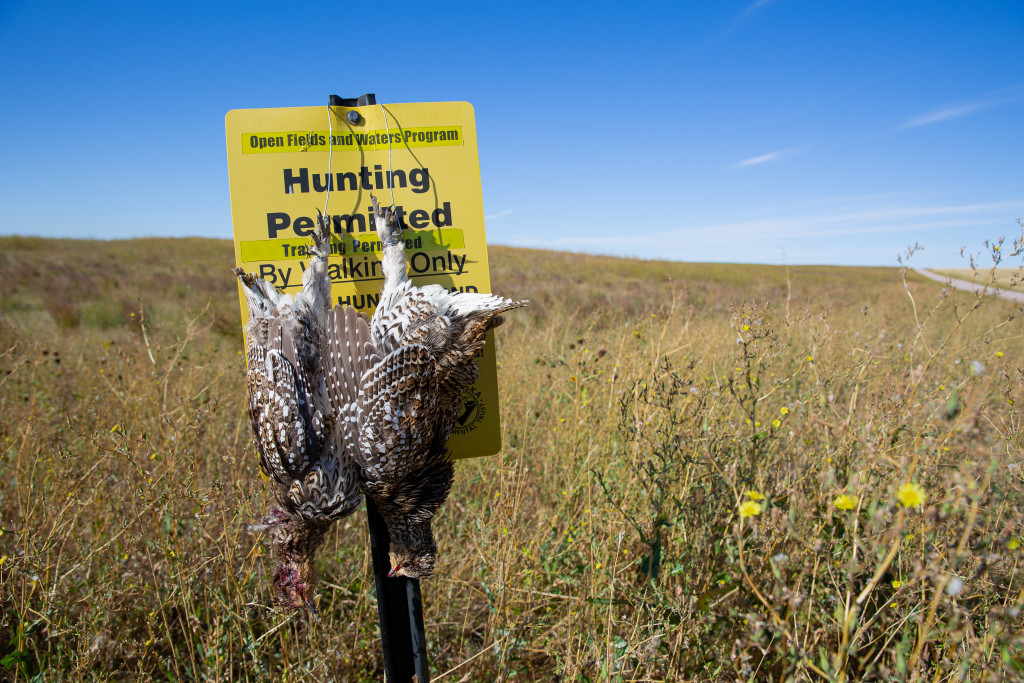
Story and photos by Jenny Nguyen-Wheatley
The hunting world can be small, and it seems even smaller on the internet. I credit social media for several friendships over the years — connections with like-minded hunters whom I would’ve never met otherwise. Through sharing photos, advice and recipes on Instagram and Facebook, we celebrate and commiserate in each other’s successes and failures every season. And sometimes, these online connections lead to hunting opportunities — real “FaceTime” and new adventures — down the road. A few years ago, my husband, Rick, and I had one such opportunity.
In early fall 2018, Ross Juelfs filled his limit on grouse in western Nebraska. He posted a picture on Instagram, and I made a casual comment about grouse being on my bucket list. Ross and I had never met, but we’ve been Facebook “friends” since I started writing for Nebraskaland almost nine years ago. He is a hunting guide at The North Platte Outpost by Cheyenne Ridge Outfitters near Minatare, and when he’s not guiding clients during the waterfowl season, you can find Ross at a nearby stream with a fly rod in hand or chasing birds in the Sandhills with his dog Beaufort.
Ross saw my comment on his photo, and without hesitation, he invited Rick and me to hunt with him the following season . To trade, I said I’d cook for him — we had a deal.
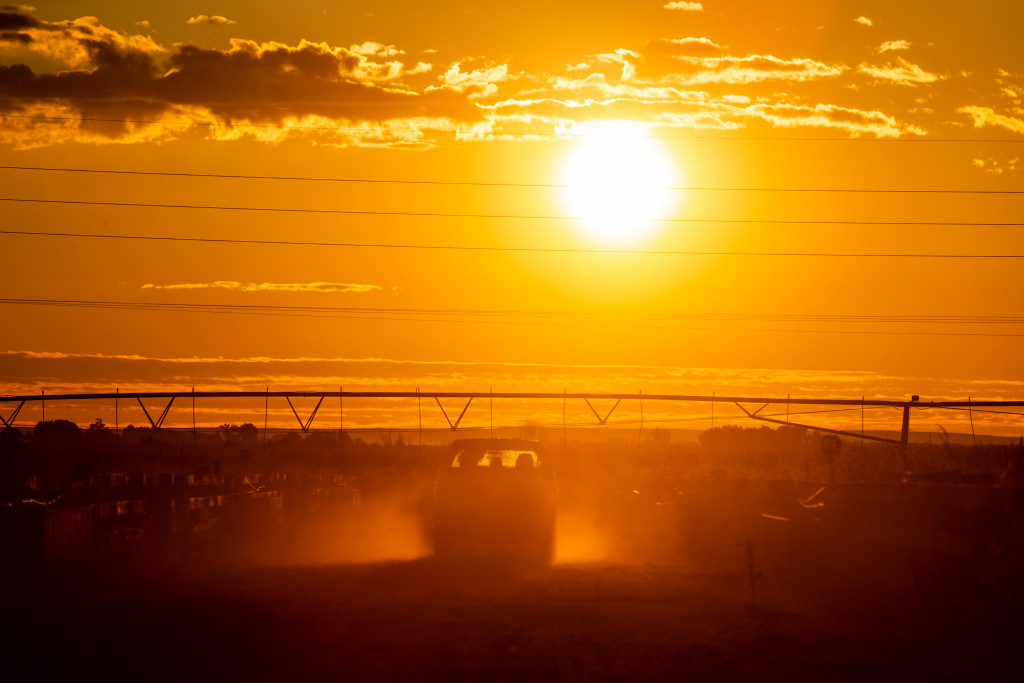
Public Grouse
A year later, Rick and I met with Ross and his friend Megan Beach, now of Oregon, out in western Nebraska on a Friday late afternoon. We went to dinner in Scottsbluff, at a great restaurant called the Flyover Brewing Company, to get acquainted and to go over the plan for the weekend. It’s always a little awkward hunting with strangers for the first time, but when you know you’re going to be handling firearms around each other, you make an effort to break the ice quickly.
The plan was to get up early the next day. We would hunt in the morning, take a break for lunch and then hunt again until one of us couldn’t walk any longer in the afternoon. I was mentally prepared to cover ground that weekend. While most of the terrain in Nebraska isn’t as dramatic as some other states’, don’t underestimate the Sandhills’ gentle slopes. I did get on the treadmill a few times leading up to the hunt, and I was so glad I did.

On Saturday morning, we were on the road as the sun came up. Ross drove us south from Gering, and we passed through the beautiful Wildcat Hills. Not too long after, we stopped at the first Conservation Reserve Program field, which was situated directly across from a field of wheat stubble that year. Having never seen grouse habitat before, I was delighted when I realized that I wasn’t going to have to fight through any head-tall stands of kochia or hip-breaking cattails, land characteristics so typical of pheasant hunting. Instead, the ground looked relatively sparse with mostly short vegetation.
Ross, Megan, Rick and I spread out to begin walking abreast. I licked my lips in anticipation and shifted my gun to a more comfortable position in my hands. My heart was pounding — I always get nervous stepping into the field for the first time every season. It’s a combination of emotions: the fright from the first explosion of feathers — it’s startling after being off for so long; and the nervousness of making the first kill of the season — that one always weighs heavily on me.

A few paces in, and we didn’t have to wait long for a flush. I didn’t see from where the bird came, but it made this distinctive sound: a combination of clucking and gobbling, almost like a rapid laugh. Ross shouted at Megan and me to look up, and before we could get our guns up, the grouse had flown beyond what both our skills could hit. It sailed across the road where we couldn’t hunt. “So, that’s what a sharptail looks and sounds like when it’s in the air,” I made a mental note.
Rick, who was working the field edge, also missed a bird; he hadn’t picked up his shotgun in over a year, and after flubbing his first-ever opportunity at a grouse, he looked over at us crestfallen, heavily wagging his head. It was Ross who would bag the first bird that weekend. His English springer spaniel, Beaufort — who was 14 years old at the time — happily made the retrieve. We worked toward the far fence line and saw several more birds flush out of gun’s reach.

When we reached the end of that field, Ross stopped to give Beaufort water. After a breather, we swung around to head back out toward the pickup, and nearing the end, a bird flushed ahead of me.
I heard it before I saw it, flapping its wings above the mullein. Quickly, I shouldered my over-under, squeezed the trigger — and missed. But there was no time to lament. Rapidly remembering what I had learned from a handful of shooting lessons, I pulled the gun tighter against my cheek, gave myself time to zero-in on my target and made a second attempt. To my amazement, I hit the bird square in the back, dropping it immediately. My companions whooped in excitement. I jumped for joy. This was my first sharp-tailed grouse.
“That was a long shot!” Ross said, smiling wide and giving me a high five. “I’m so excited for you!”
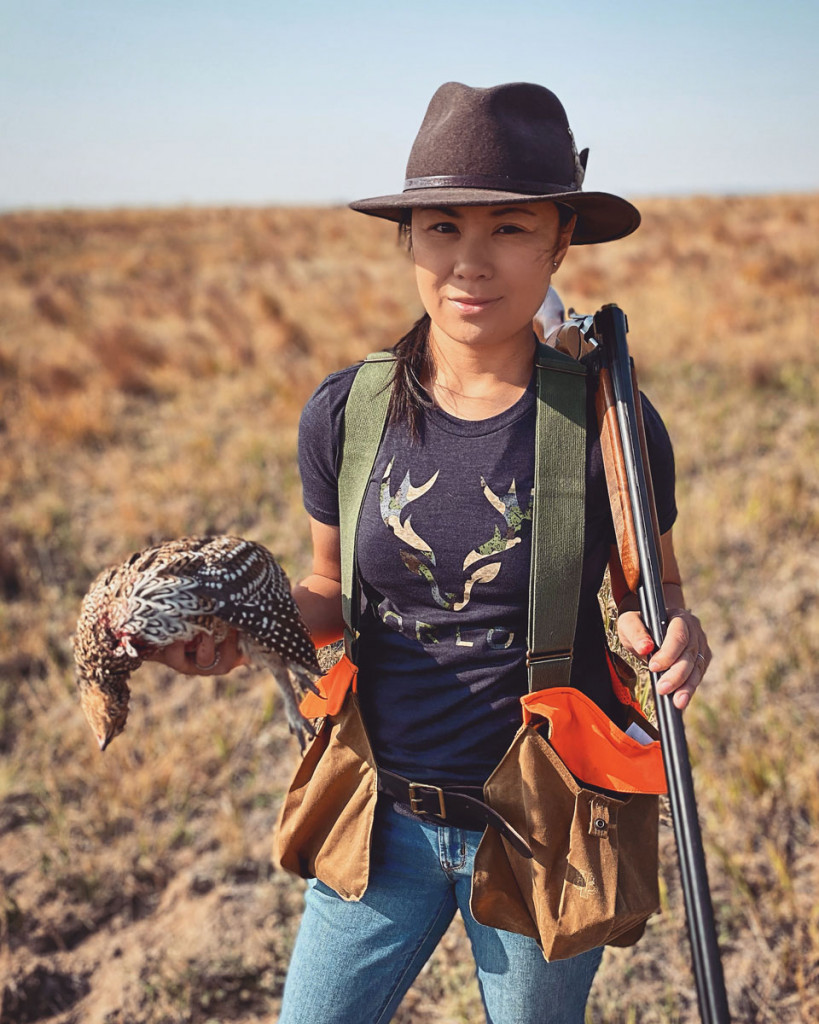
We found the bird, and Rick took a picture. He was just as happy for me as I was for myself. Both he and I were surprised by how many birds we saw, just in that one CRP lot. We continued on to the next field, where Rick redeemed himself and shot his first sharpie, too. Ross got his second bird in the bag.
We had lunch at a charming roadside diner called the Double L Country Store and Café, located on Highway 71 near Harrisburg. The Double L had great food: fresh farm-to-table cooking, ice cream, old-fashioned sodas and baked goods. Its gift shop was full of interesting knick-knacks. We went over the morning’s events.
Temperatures got warm that afternoon, and although keen, Beaufort sat out the rest of the day. He was 14, after all, and his role that weekend can be best described as “honorary.” That was another thing that surprised me: You don’t need a dog to be successful hunting sharp-tailed grouse in this area. Ross brought Beaufort along mostly for the company, and because his senior dog still loves to go out.
“I’ve tried retiring him many times,” Ross said.
The remainder of the day proved to be as productive, although more birds flushed wild. Ross and Rick ended up shooting their limits, and I got one more sharpie in the bag. Unfortunately for Megan, she was never in the right place at the right time. Still, I don’t think she minded. An accomplished hunter, Megan was just happy to be out and meet new hunters.
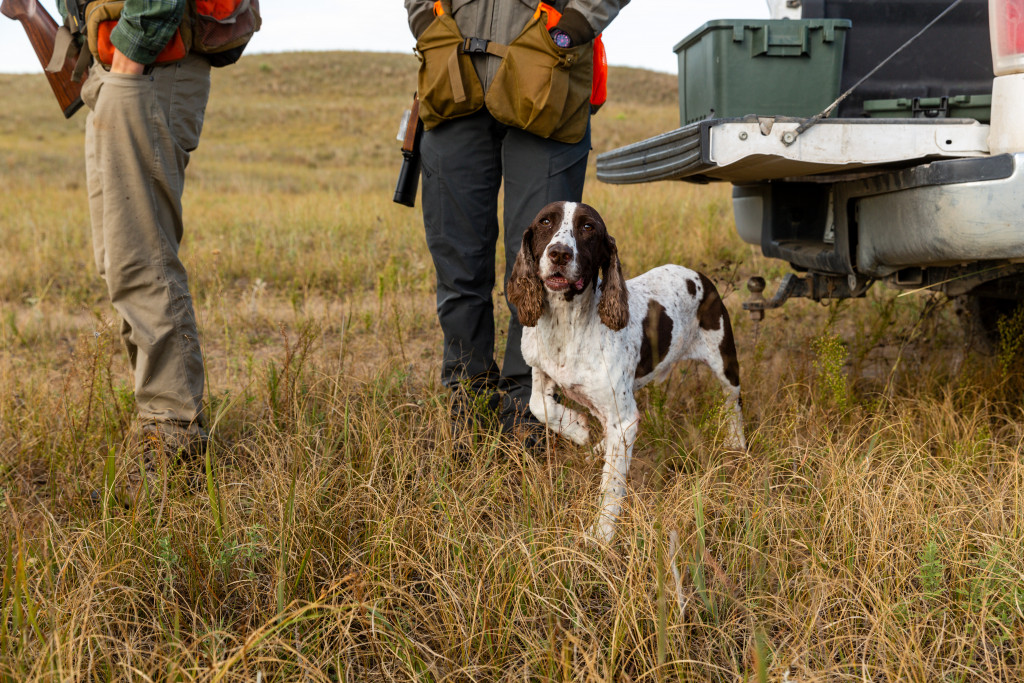
As for Rick and me, we were absolutely stoked about our day. The weather was beautiful, the company was second to none, and we were happy to see birds on public ground. That night, I prepared a dinner of French sorrel soup, summer heirloom tomato salad, goose confit with Cumberland sauce, sautéed seasonal mushrooms and wild elderberry panna cotta for dessert. We stayed up late talking — a couple of us had trouble waking the following morning.
Missed Opportunities and Other Ones
The next day, we hunted on private rangeland for prairie chickens. I couldn’t tell you how big the property was, but it sprawled for miles in all directions; I could see Lake McConaughy sparkling in the distance. The scenery was spectacular — it was cattle country as you would imagine it in Hollywood cinema. However, we saw few birds, and the ones we did view did not hold well.
I still kick myself when I think about that Sunday hunt. Toward the end of the morning, after walking miles, up and down the hilly, otherworldly landscape, a prairie chicken caught me by surprise. It was sitting on the opposite side of a hill, and as soon as I crested over the hump, the bird exploded into flight, its wings quickly catching the wind. I panicked. Had I given myself more time to shoulder my gun for a proper mount, maybe — just maybe — I might have picked up my first greater prairie chicken on that trip, too. Alas, I had spent my shells, and all I could do next was watch it disappear over the next ridge. That was the one opportunity I had at a chicken that day, and I blew it. A single, lonely bird left the field that morning, shot by Ross, who gifted it to me.
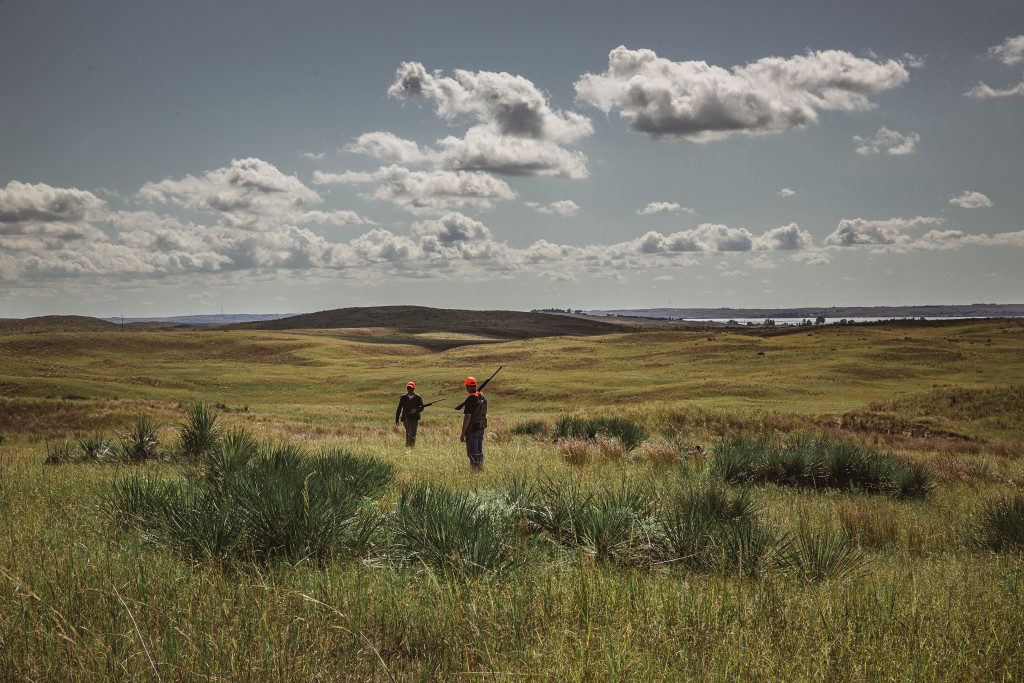
As vexed as I was over missing a bird, a greasy burger and ice-cold red beer at the Admiral’s Cove on Lake McConaughy melted away all irritation. It was also where we parted ways with our new friends. We promised Ross we’d be back again, and that following year, Rick and I traveled west to hunt grouse twice. We hunted on our own in early September 2020 on our way home from vacation in Yellowstone and then the second time with Ross — and we’ve never come home empty-handed.
Tradition
Grouse are quickly becoming my favorite game to hunt. With the season beginning Sept. 1, it’s the perfect kick-off to a new hunting season to go along with doves. But more than that, I often ponder about how the opportunity came about. Circling back, I think about the hunting community as a whole: Much like other sports, there are rules of engagement when hunters meet in the field. But unlike other sports, there is no room for dirty play: Can you trust a stranger to meet them on unfamiliar ground? What’s more, can you trust them to keep you safe in the midst of an exciting flush? There really is no other sport that can bring strangers together in such an extraordinary way as hunting.
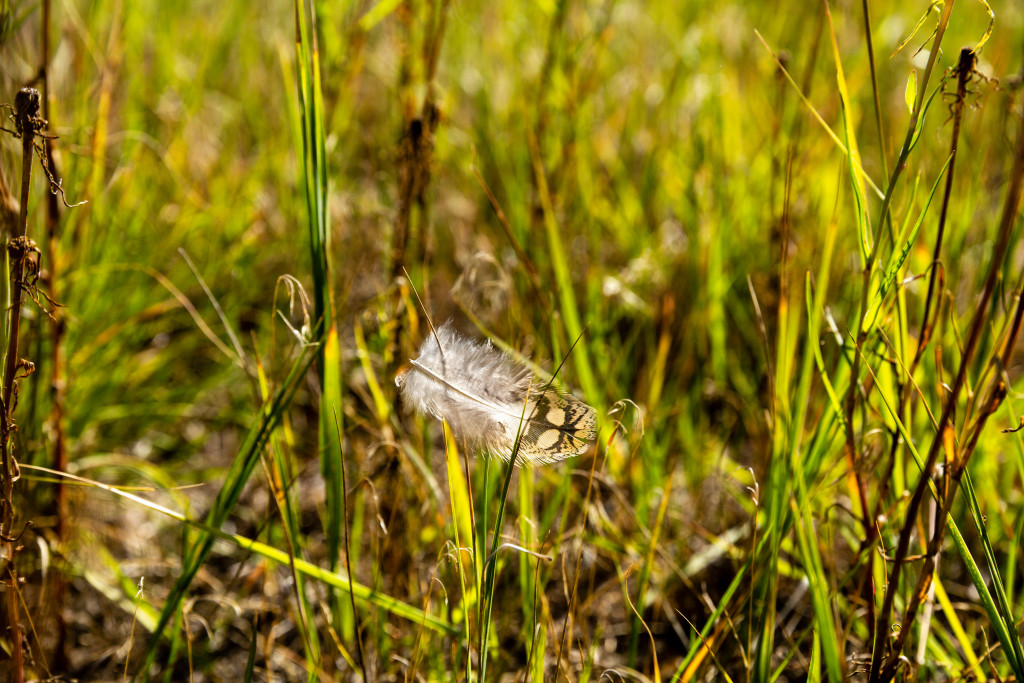
In hunting, there’s an uncommon trust that binds us together. Whether you hunt with a stranger on the other side of your home state, or on the other side of the world, gun safety, sportsmanship and respect for the game you chase are the foundations of every successful hunt. And the stories you make together and tell beyond the field keep the tradition alive. I’ve hunted with and photographed many strangers over the years, and always on the drive home, I never fail to feel pride in being a part of this world. ■
For more information, see Game and Parks’ 2021 Prairie Grouse Hunting Trip Planner: https://bit.ly/3njdfy3
Gear for Grouse Hunting
The prairie grouse season starts Sept. 1, and temperatures could be scorching during the first half of the month and chilly as the season progresses. Wear layers that you can easily take off. Also, choose a lightweight, well-ventilated hunting vest to wear.
Expect to cover ground. In some Open Fields and Water sites, there also could be elevation. Light, comfortable hiking shoes will do. Sandburs are a nuisance out this way, especially for hunting dogs, but it’s not enough for hunters to wear chaps. Grouse like open grasslands and short brushland habitat, which are relatively easy to walk.
With all the walking, hunt with a lighter, easy-to-carry gun. Grouse are not hardy birds and are easy to knock down — that is, if you don’t miss. Earlier in the season, Rick and I do well with our 20-gauge over-unders with modified chokes in both barrels and 6 shot.
Shooting instructor Greg Preston of Omaha said, “Over pointing dogs, improve cylinder to light modified is best, and if they are getting up a little wild, use modified in the bottom barrel and improved modified on top. For a single barrel gun, modified is the best all-around choke.”
Getting There and Staying
From the metro area, the drive out to Scottsbluff can be a long one, so set aside a three-day weekend to hunt. If you’re leisurely travelers, like me, tack on a couple more days to see other sights on the way there and back. I recommend setting aside half a day for scouting if you’re not familiar with the area.
The fastest route to Scottsbluff from Omaha or Lincoln is on the I-80. Everyone knows that long stretch to North Platte can be boring, so bring a fishing rod to visit one of the I-80 lakes, if you have the time. Then stop for a late lunch in Paxton. Although Julie Geiser has written about Ole’s Big Game Steakhouse in a previous travel story, it didn’t prepare me for the greeting I received when I walked in — a massive polar bear stood near the doorway, followed by countless animal mounts from every continent that filled every inch of wall space. It’s a lot to take in, and you’ll relish every bit of it.
If you’re coming from Lincoln, it would make more sense to stick to the I-80. But those coming from Omaha have another option: Hop on the 275 toward Fremont, then head straight west on the 91. The Sandhills start opening up once you get near Ericson. Check out the Northside Bar in Burwell, a cowboy watering hole complete with bull fries on its menu — the drinks are cheap, the service is friendly and all the old rodeo photographs are fun to look at, too. This route will take you onto Highway 2, which isn’t called the Sandhills Journey Scenic Byway for no reason.
Stay in Scottsbluff or Gering for the hunt. I’ve found that hotel prices are slightly cheaper in Gering; the Cobblestone Hotel & Suites and the Monument Inn & Suites are both pet friendly if you plan to bring a hunting dog; however, make sure to call ahead.
Scouting
Before you hit the road, make sure to bring your Nebraska Public Access Atlas. And although not necessary, I’ve found the onX app helpful in marking and saving my favorite hunting and foraging spots, as well as being able to see property lines. You could also download maps ahead of time to use in areas with poor data coverage.
When you get to Scottsbluff/Gering, drive those county roads. Map sheets 3 and 4 show the general area where we hunted. A good number of those Conservation Reserve Program areas shaded in red hold grouse. John Laux, Nebraska Game and Park’s upland habitat and access program manager, said:
“Out in that part of the state, grouse commonly use CRP fields, which are typically undisturbed and provide better cover than adjacent rangeland, especially during dry years like this one. That all being said, they do hang out in some short or sparse cover at times. You are generally looking for large blocks of grasslands — mostly void of trees — with shin to knee-high grasses that provide sufficient cover for concealment. This structure is typically the key to finding grouse.”
Furthermore, look for areas with good plant diversity of grass intermixed with broadleaf plants and patches of bare ground, Laux said.
“These broadleaf plants attract insects, which are an important food source for grouse early in the season. Many broadleaf plants also produce seeds and fruit. Native shrubs are another thing to look for — they provide shade during hotter parts of the day and food resources as well. And during dry periods, grouse often key-in on the fruits and succulent leaves of some forbs.”
Topography is also important. “Throughout much of the sharptail’s range in Nebraska, they prefer choppy topography and are usually found at the higher elevations, which is generally where you will find good plant diversity and cover that is more patchy and intermixed with bare ground,” Laux said.
The post Public Grouse: An Adventure Story appeared first on Nebraskaland Magazine.
















